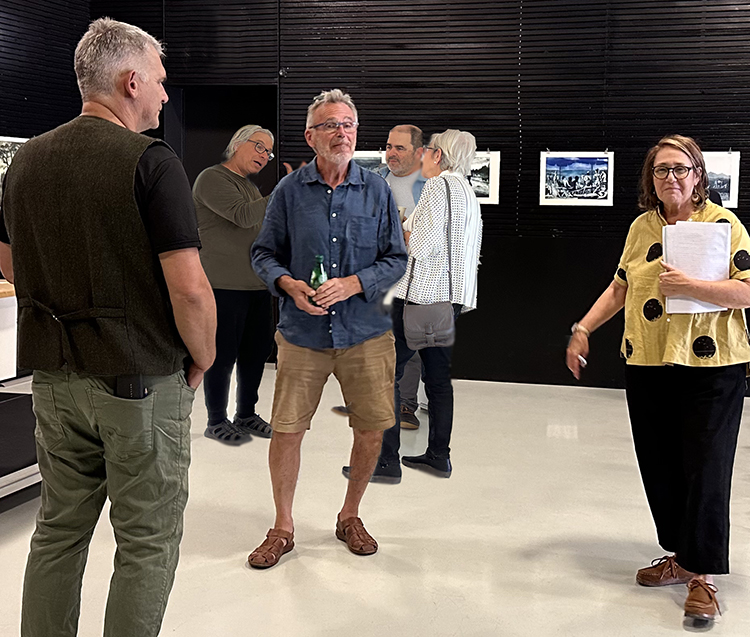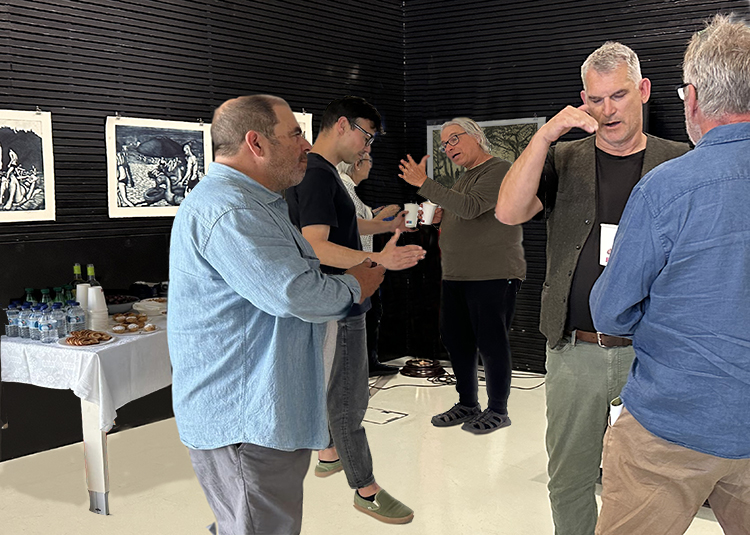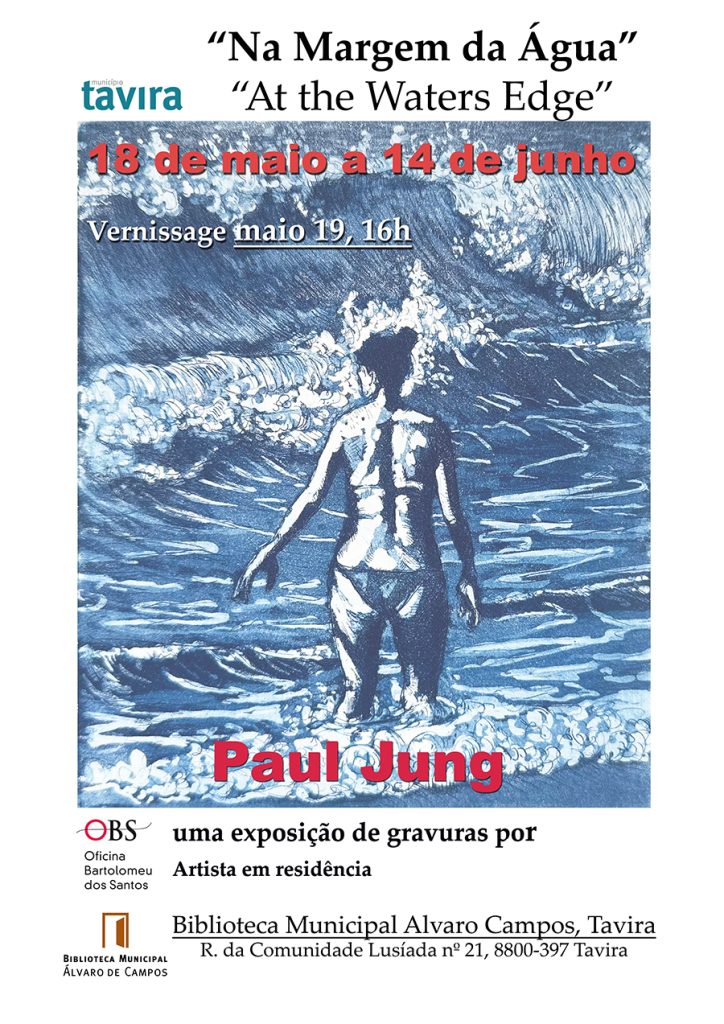
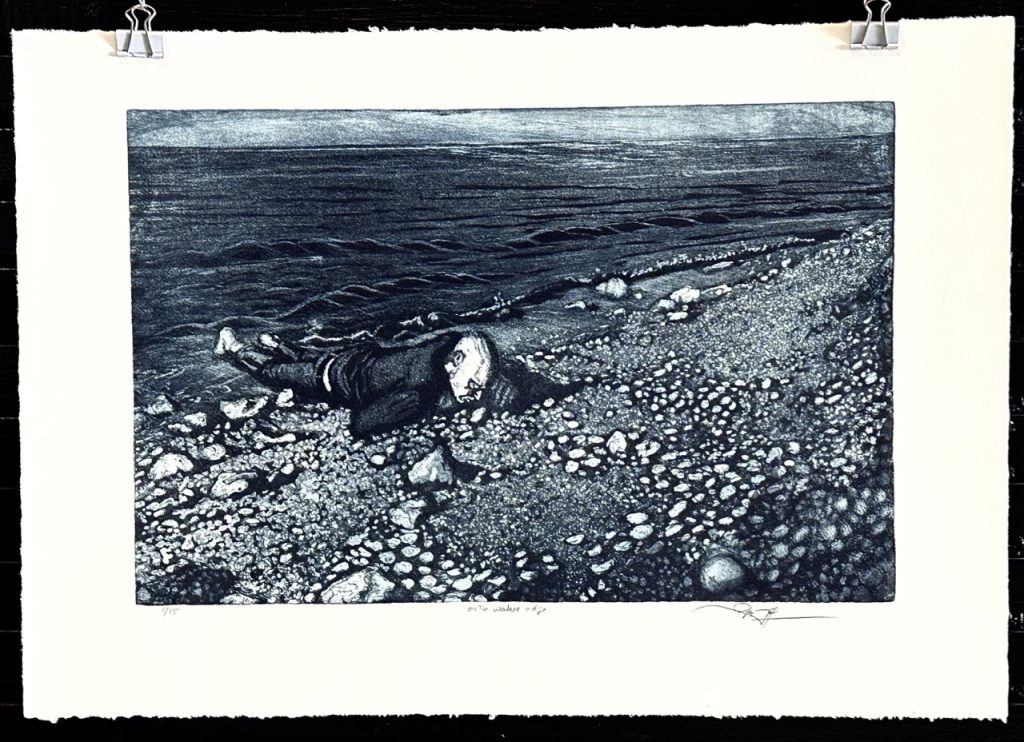
The waters edge
The imaginary of the “water’s edge” is a boundary between the real and the mythical, where freedom, exploration, and renewal can be found. The border between land and water has many associations. It is the intersection between the conscious and the unconscious, it exists as a symbolic transition, it is the point of departure, and the place of return and the location where origin stories begin. The theme orbits around darker associations as we (both individually and collectively) fall off and are “pushed over the edge”.
Multiple discourses operate simultaneously in these works between public exhibitionism and privacy, narcissism and celebration, democratization and privilege, sublime and the absurd. The beach is at the center of the democratization of leisure, but also a place for meditation and self-discovery. The images are landscapes that denote beauty but nature exists here as a backdrop to figures, often tourists, who colonize beauty.
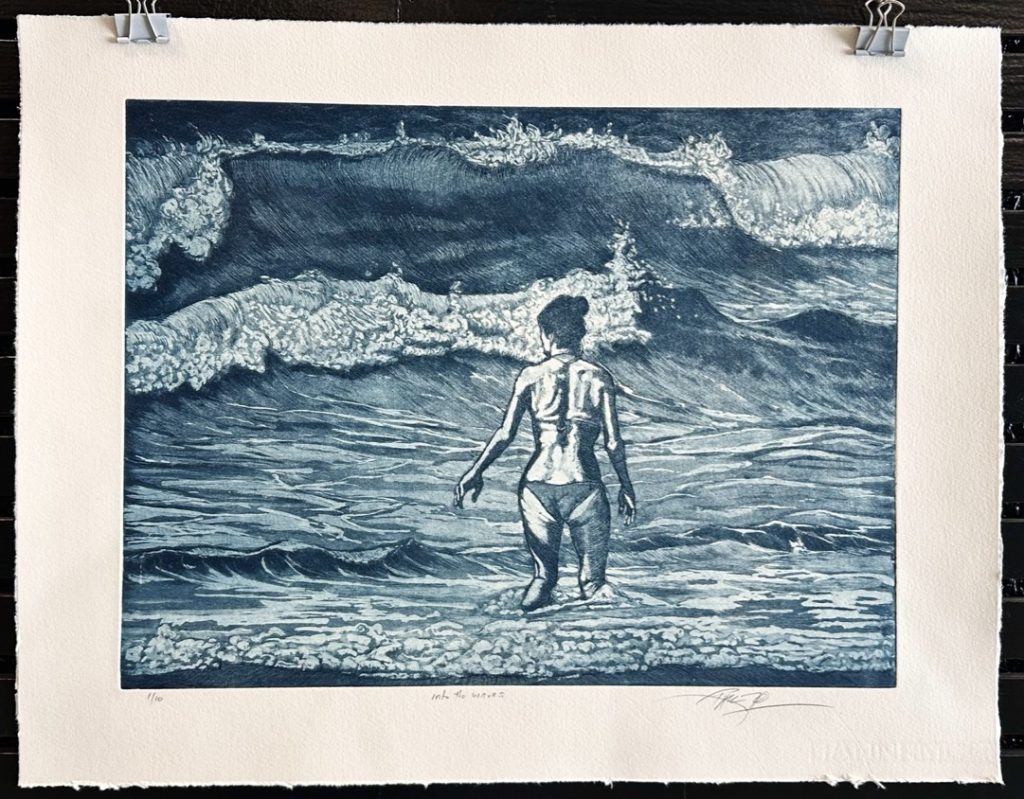
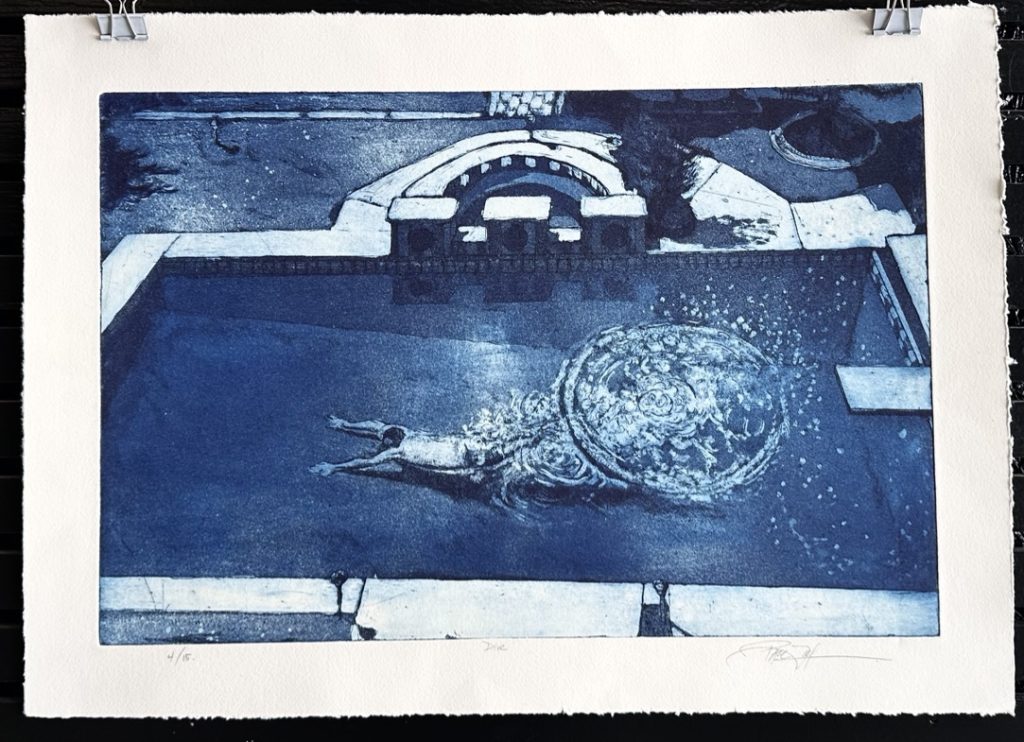
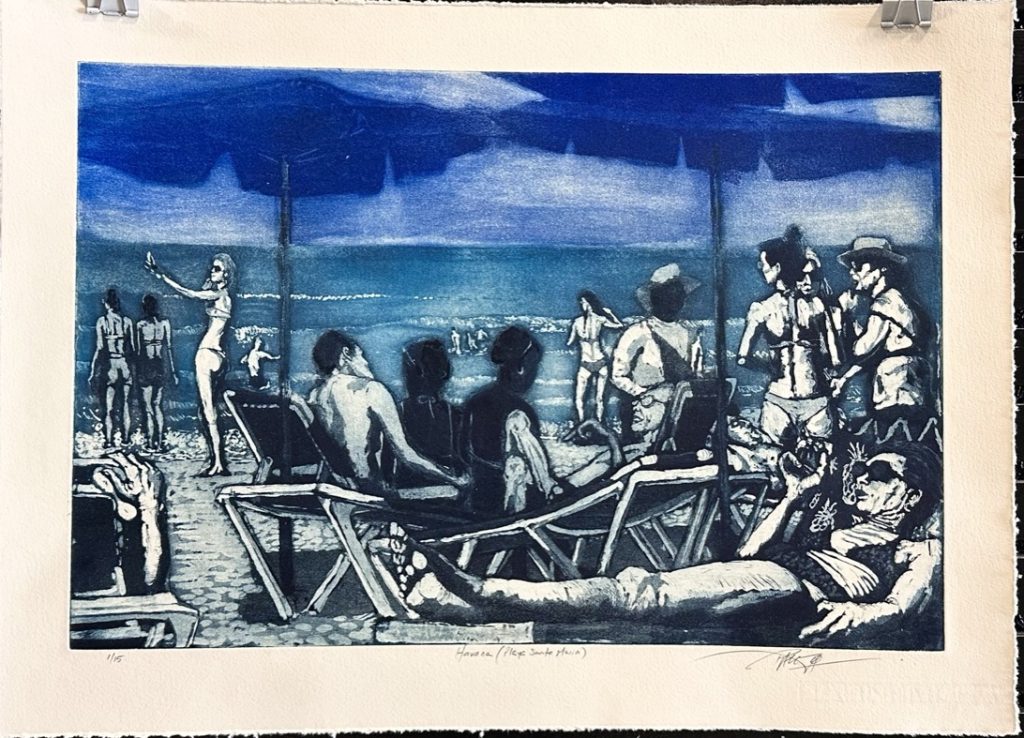
The images have been collaged from photographs deploying narrative forms like metaphor and analogy to excavate mundane moments for additional meaning. Narrative art constructs stories and story telling the philosopher Walter Benjamin said: “takes the representation of human life to its extremes and gives evidence of the profound complexity of living”.
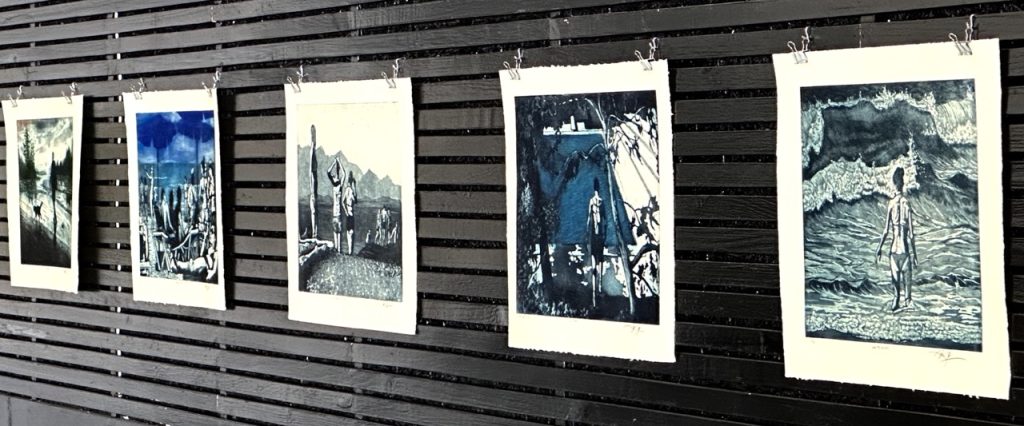
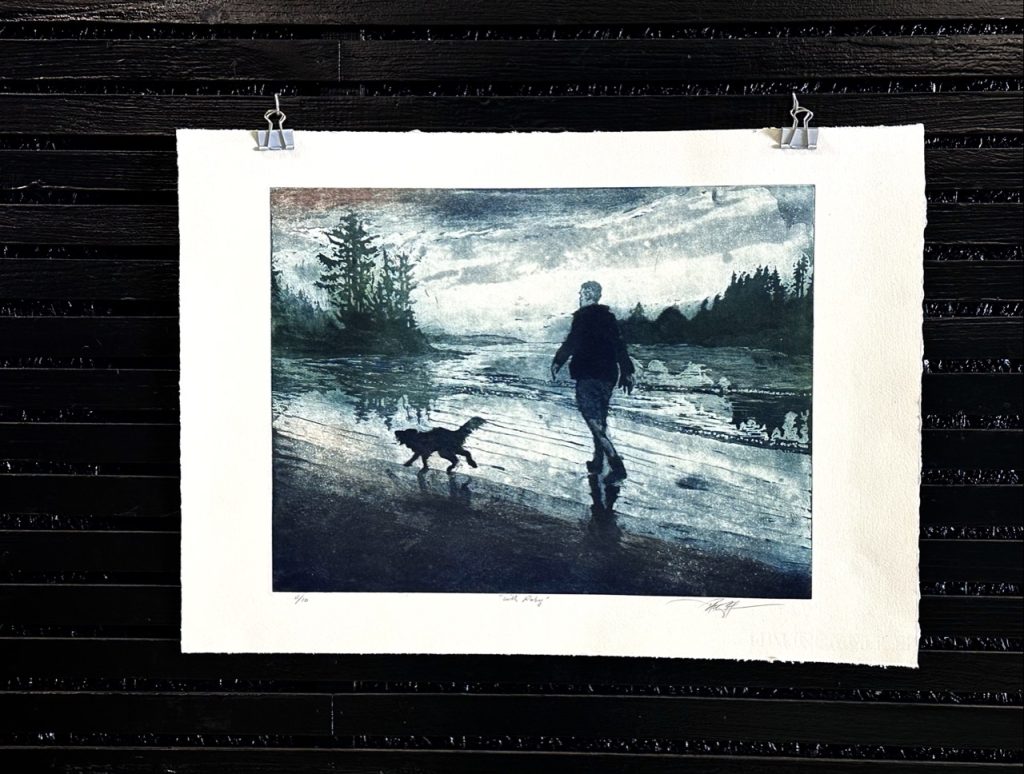
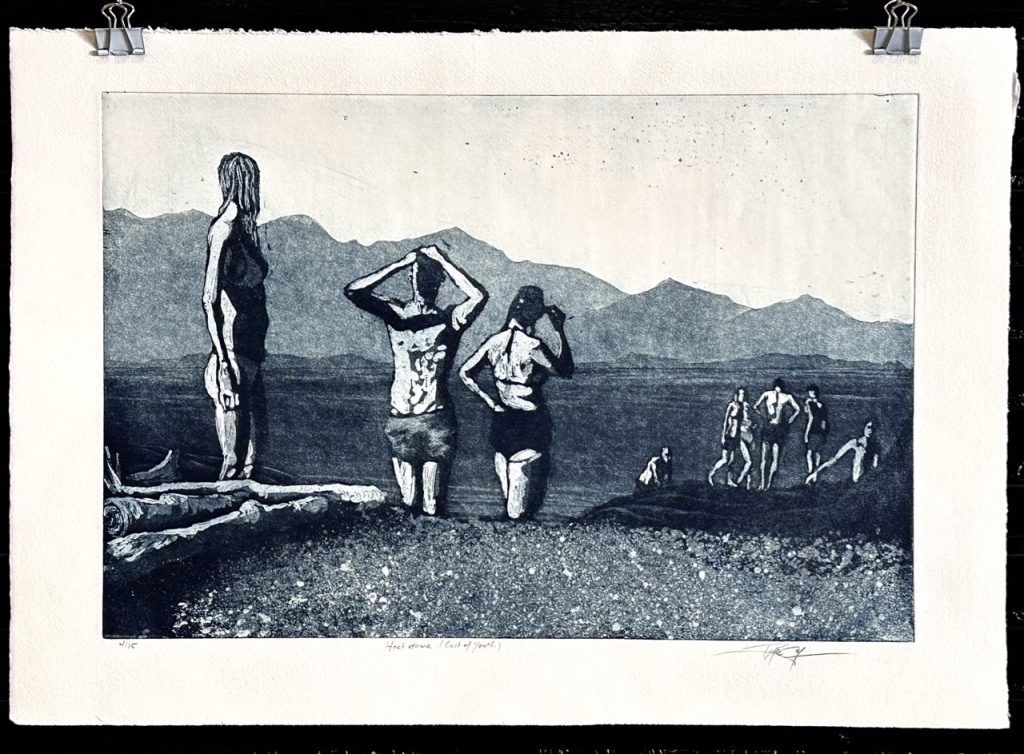
Shown here in Tavira the images construct a frame that invites introspective, however the pictures also place the audience as a voyeur watching others in their public performance of pleasure. Portugal is a natural place to explore the theme since the nations history and identity is welded to its location at the edge of the Atlantic.
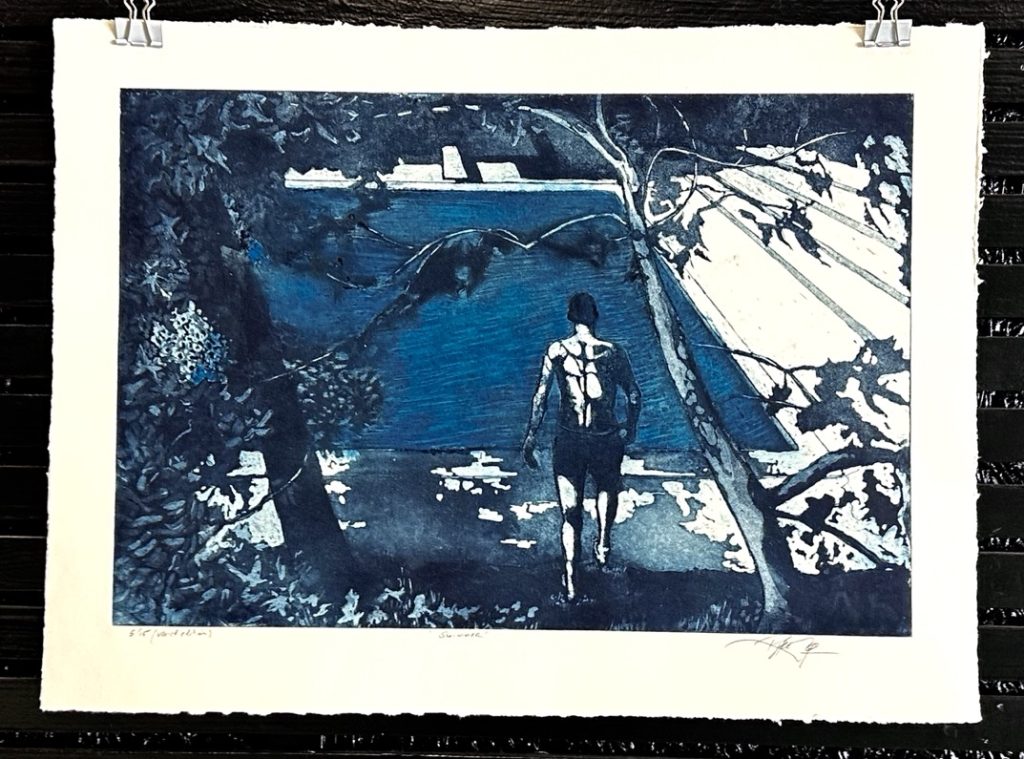
The exhibition is a result of a residency at the Ofinia Bartolemeu dos Santos (OBS). a printmaking studio built by “Barto” dos Santos who was a teacher at the Slade School of Fine Arts in London and was recognized as Portugal’s foremost etcher until his death in 2008. Paul was a student of Barto’s and the exhibition acknowledges the generational debt he owes his mentor. Barto’s art was deeply concerned with ocean imagery and he utilized rich aquatints that gave his prints a spontaneity and painterly fluidity. These prints acknowledging how mentorship is a generative process and part of a generational chain of contemporary art making.
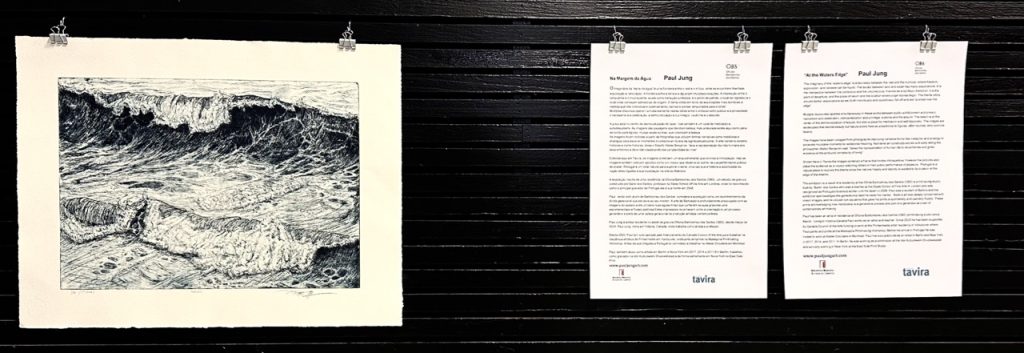
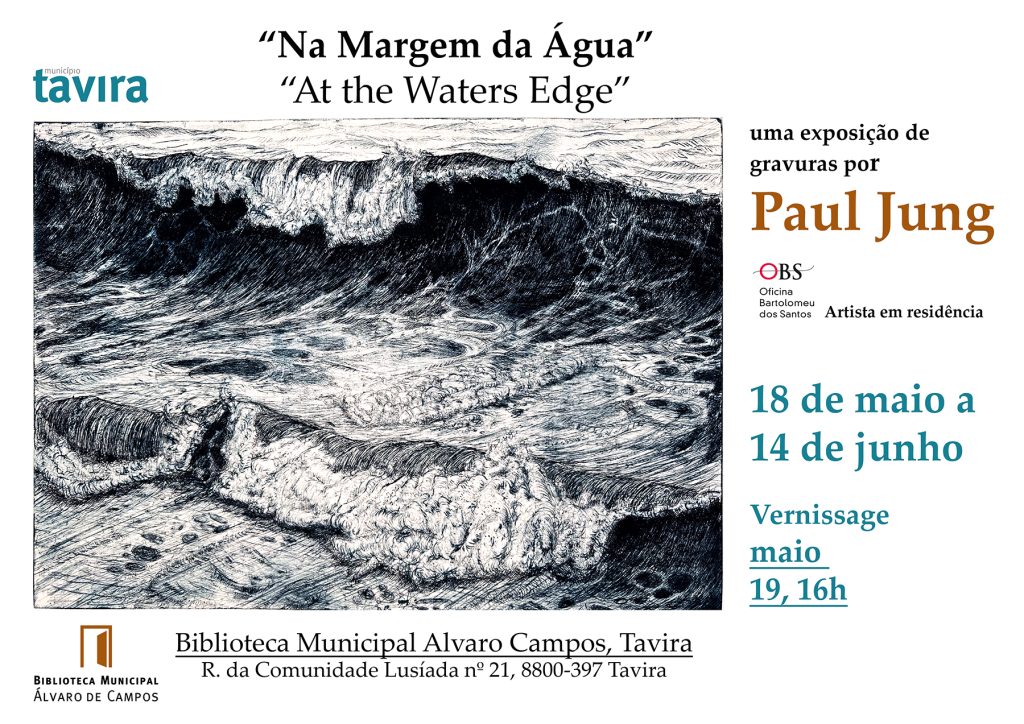

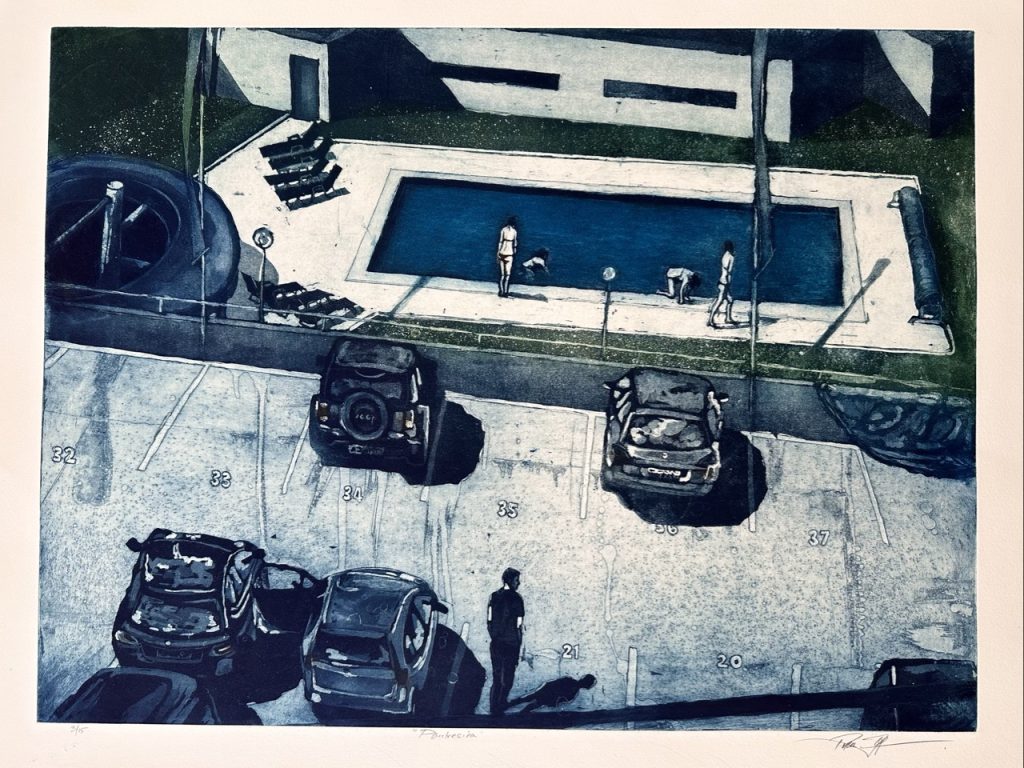
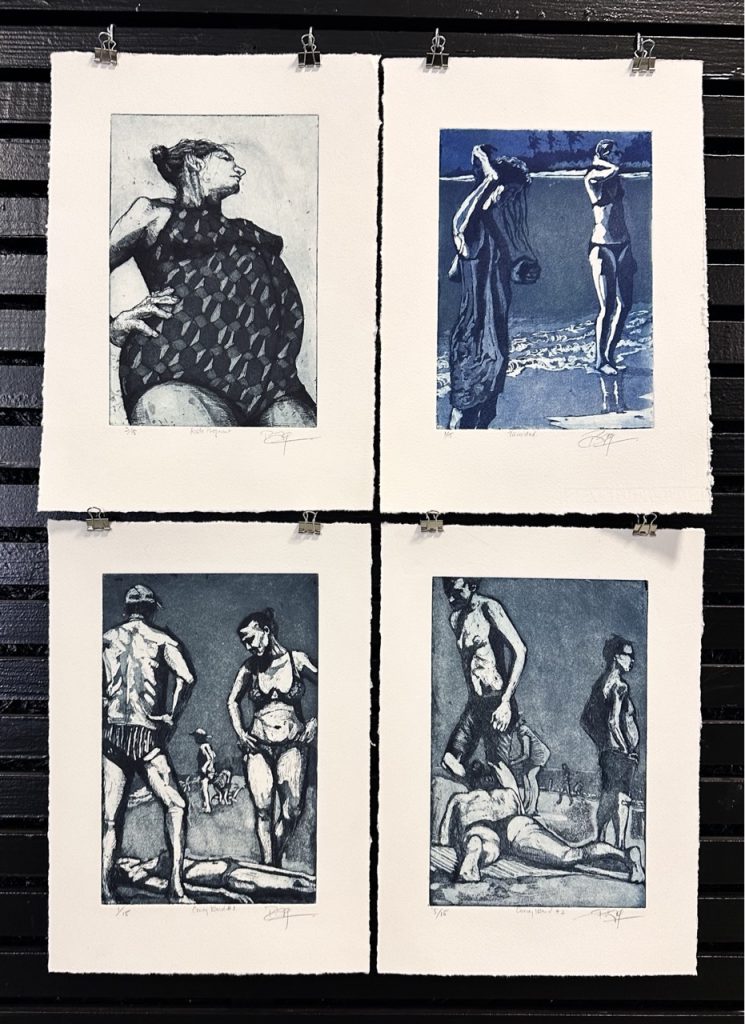
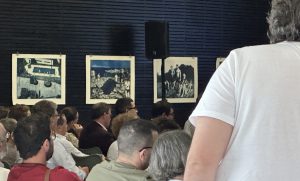
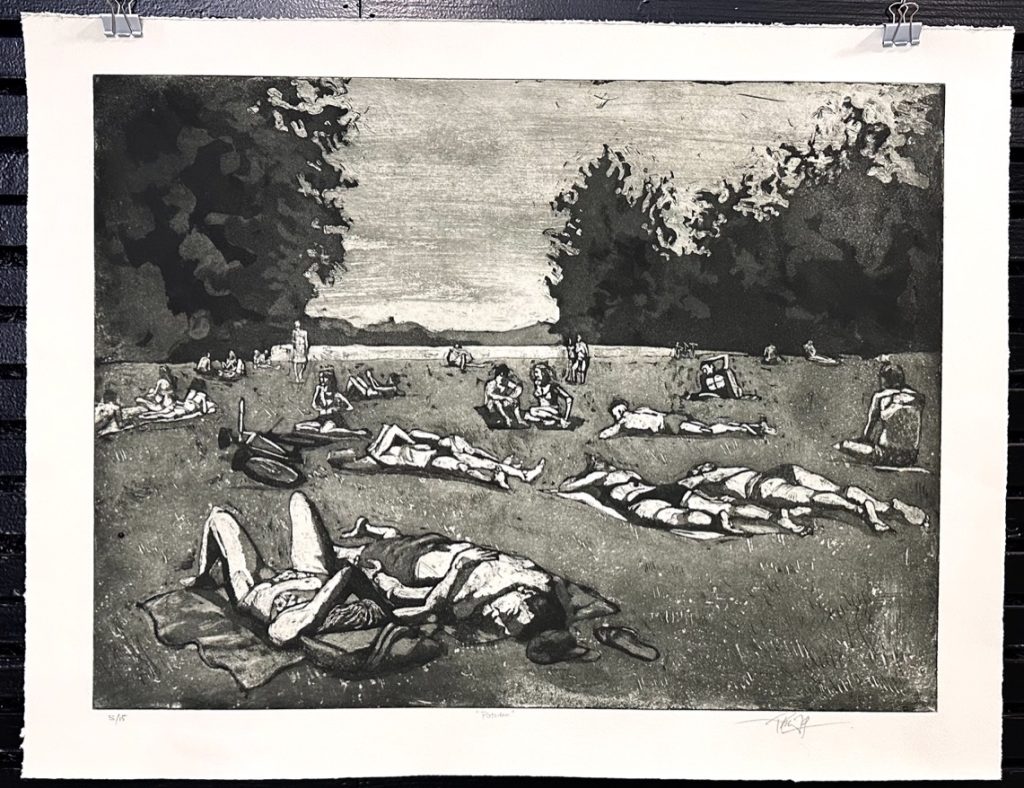
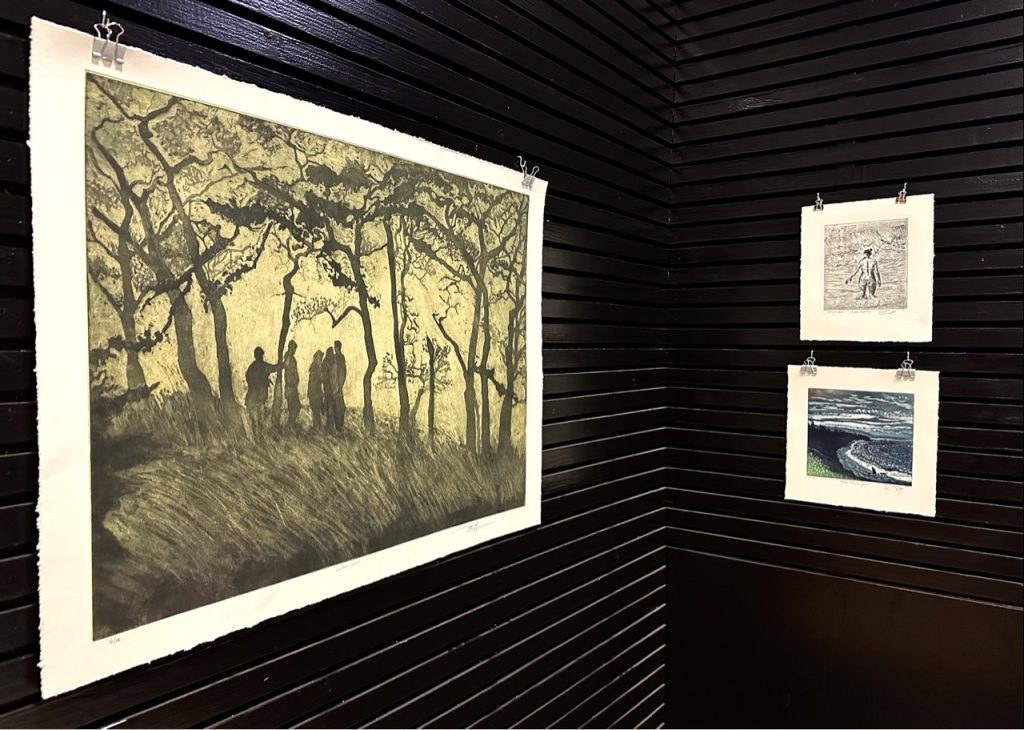


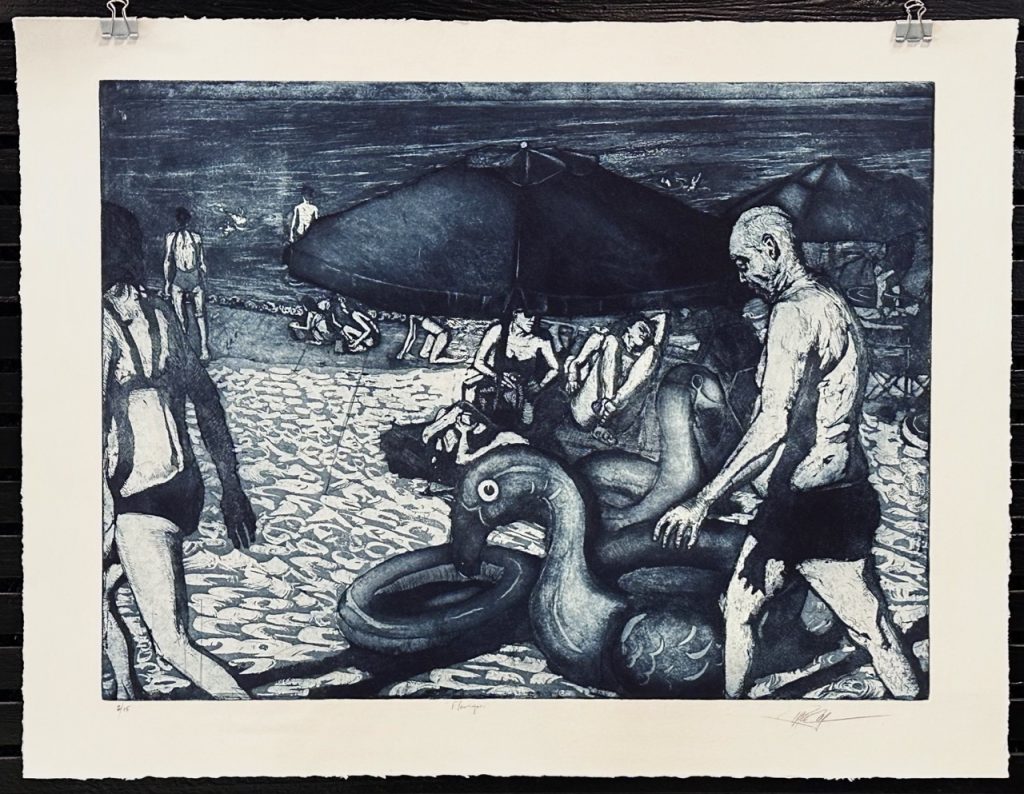
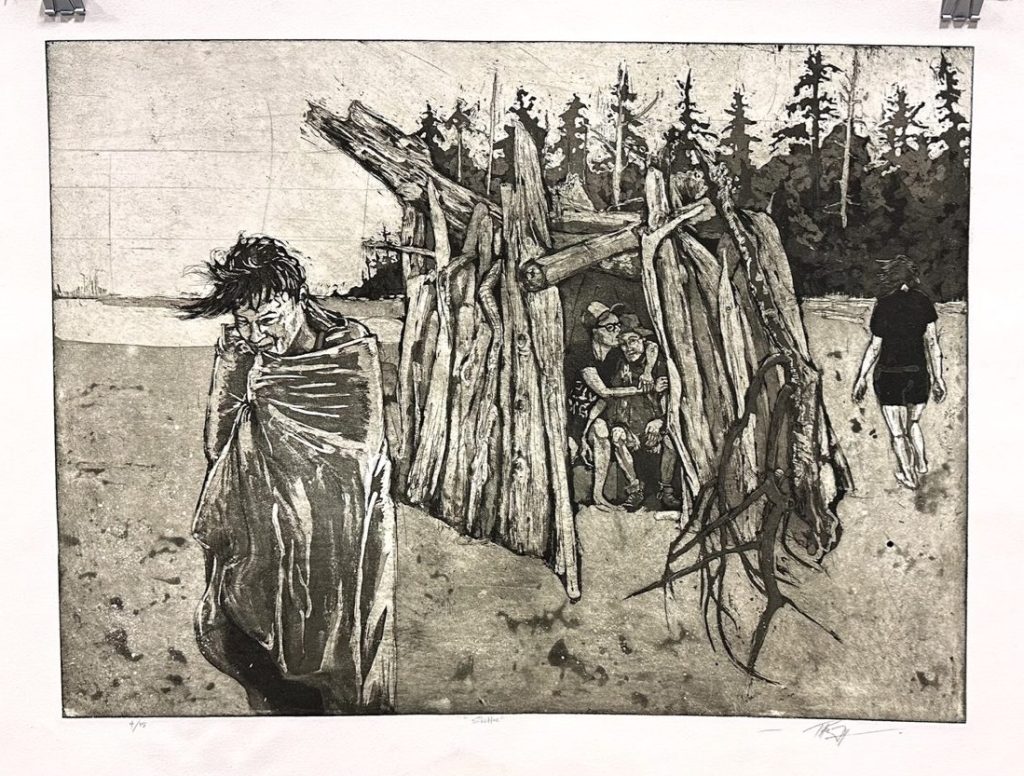
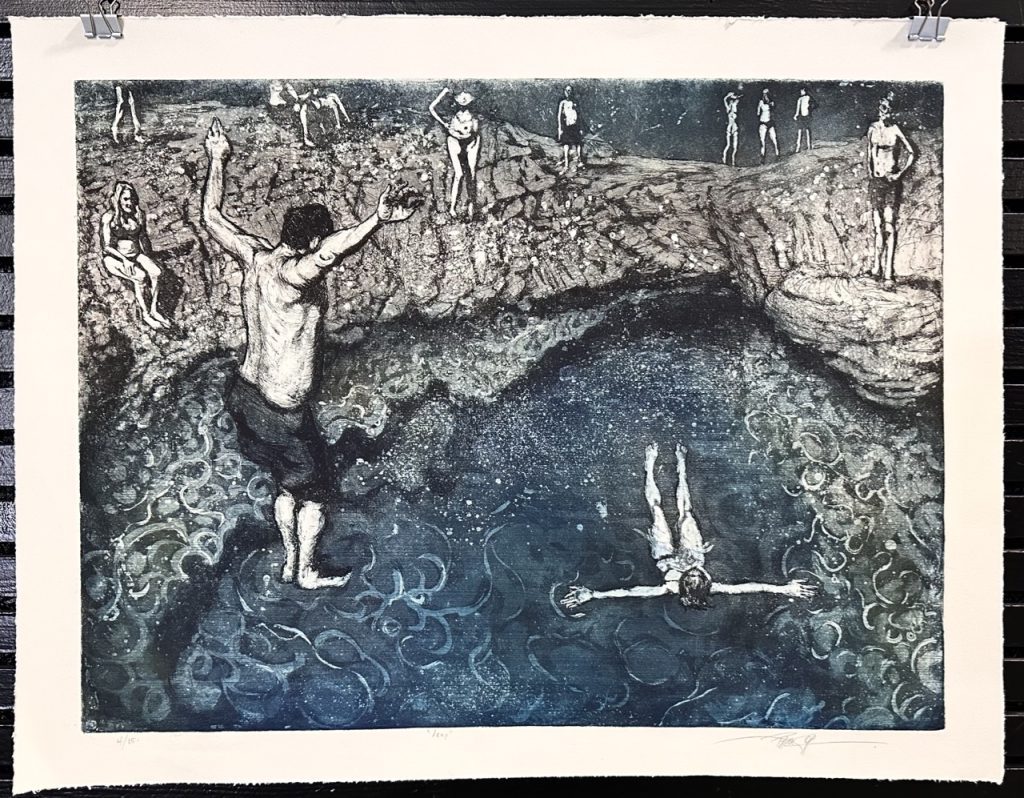
One of the most satisfying the aspects of the show was showing and selling Gaza. At a time when artists are being silenced for their support for the massacre of Palestinians at the hands of the Israeli’s it was very satisfying seeing hte support of intellectual community in Portugal. To show a picture portraying the horrors faced by Palestinians in a public institution in Canada would most likely be prevented and would at least be provocative. The opportunity to show the work, have hundreds of people in the community of Tavira see it, and finally be able to sell it and receive $500 that we were able to donate to UNWRA (an agency maligned by the occupying power, Israel, and whose funding was cut by Canada without any proof or due process).

